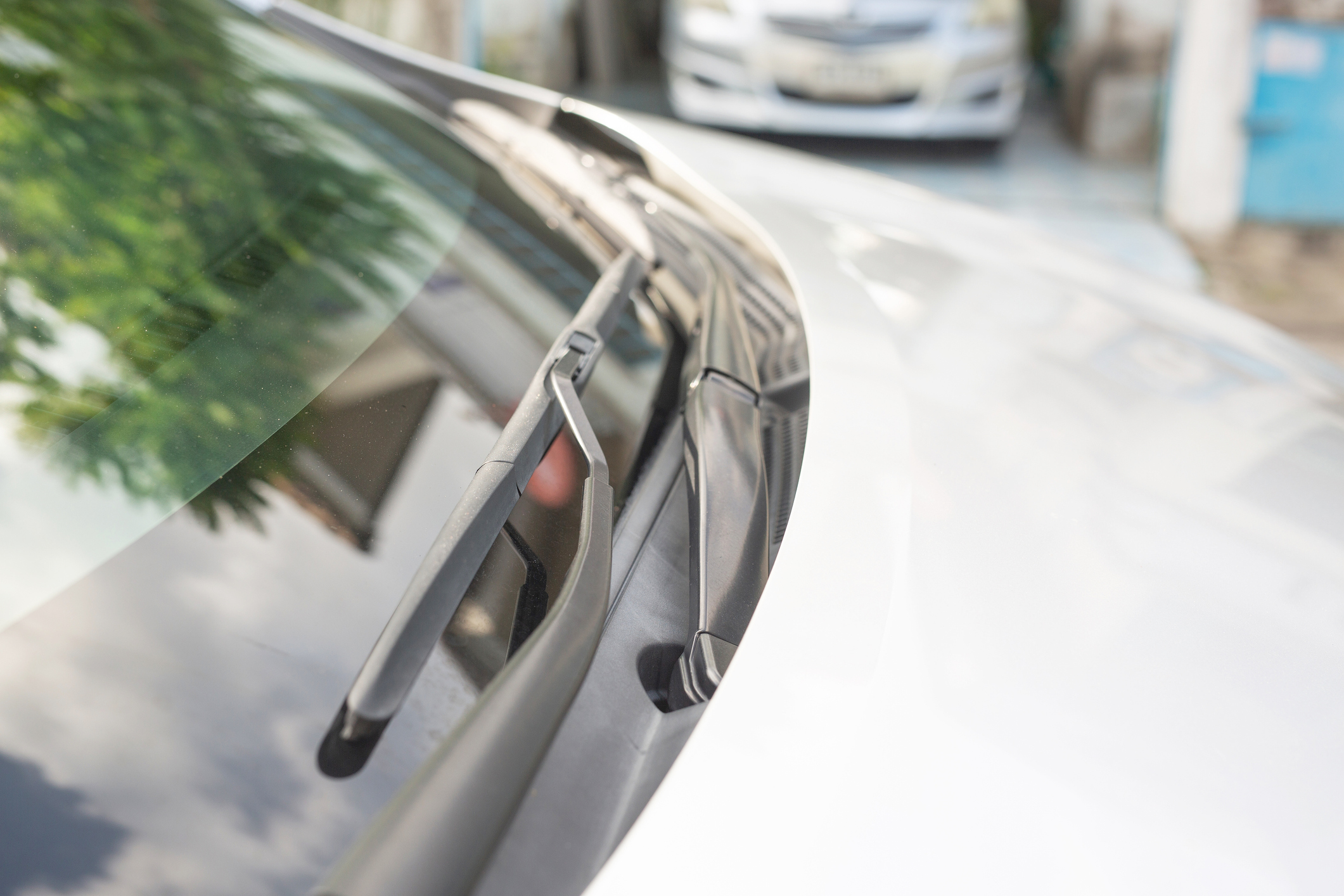Article Written by Andrew Sheldon
Few factors are more crucial to ensuring a driver’s safety than visibility. This makes windshield wipers, and their effectiveness, vitally important. But because wipers are exposed to the elements, they wear down fast and need to be replaced regularly.
Just how frequently you need to change your wiper blades will depend on your environment and driving conditions. It’s not a guessing game, however. There are a number of indicators to show you when it’s time to make the swap.

How Do You Know When to Change Wiper Blades?
There are several telltale signs your windshield wiper blades need replacing:
- Wearing occurs when the blade’s square rubber edges become rounded. This happens after extensive use.
- Splitting occurs when ultraviolet rays from the sun penetrate the blade’s rubber squeegee, causing it to break down and separate from the blade frame.
- Streaking occurs when the wiper’s rubber squeegee dries, hardens and cracks.
- Skipping occurs when the blade develops a curvature due to underuse.
How Often Should I Change My Wiper Blades?
The general rule of thumb is to replace your windshield wiper blades every six months or 6,000 miles. This may vary depending on where you live. Extreme temperatures and excessive snow and rain can cause your wipers to wear down faster. At the very least, you should check your wipers every six months to determine if they need replacing.
What Causes Wiper Blade Problems?
Bent Wiper Frames
The plastic and metal frame of your windshield wiper can get damaged quite easily. Running them over ice on your windshield can do it, or even wiping them down too aggressively during cleaning. When the frame gets bent, the wiper’s blade won’t make full contact with the windshield. Those untouched spots won’t get cleaned when the wipers are activated.
Damaged Squeegee Rubber
The rubber squeegee on the wiper blade is what does the cleaning. If it’s damaged, it won’t do an effective job. This rubber can get cracked, split, chipped and even broken off thanks to harsh weather or debris. Just the sunlight alone can cause the rubber to break down. Even under perfect conditions, the rubber’s sharp edges will become rounded over time, reducing the blade’s ability to wipe the windshield clean.
Dirty Wipers
If the tool used to clean your windshield is dirty, the glass doesn’t stand much of a chance in getting clean. Windshield wipers can accumulate dirt and road debris, hindering the blade’s effectiveness and possibly even scratching the windshield.
How to Maintain Your Windshield Wipers
You have to replace your windshield wipers frequently, but you can keep them in well-functioning order until then by following these steps:
Clean Your Windshield Wiper Blades Regularly
To clean your windshield wipers, lift each wiper arm up from the glass and apply non-abrasive glass cleaner or windshield washer solvent with a soft cloth cleaning rag. It’s a good idea to consult your owner’s manual to see if the manufacturer recommends a specific cleaning solution for wipers.
Remove Ice and Snow
It’s important to thoroughly remove any snow and ice from your windshield before operating the wipers. If not, the weight can damage and bend the wiper frames, which won’t allow the wiper blade to make full contact with the windshield.
Inspect Your Windshield Wipers
There are a number of things to look for when you’re inspecting your car’s windshield wipers. Notably, you should check for any damage to the rubber squeegee. This includes any cracking, splitting, hardening and tearing, as well as any contamination from road film or chemicals and other substances. You’ll also want to make sure the wiper frame is not broken or bent, and that the blade is making proper contact with the windshield.
AAA Members Save up to 20% on car parts & accessories (including windshield wipers!) with AAA’s Discounts & Rewards Partner: NAPA Auto Parts. Start shopping online here.


